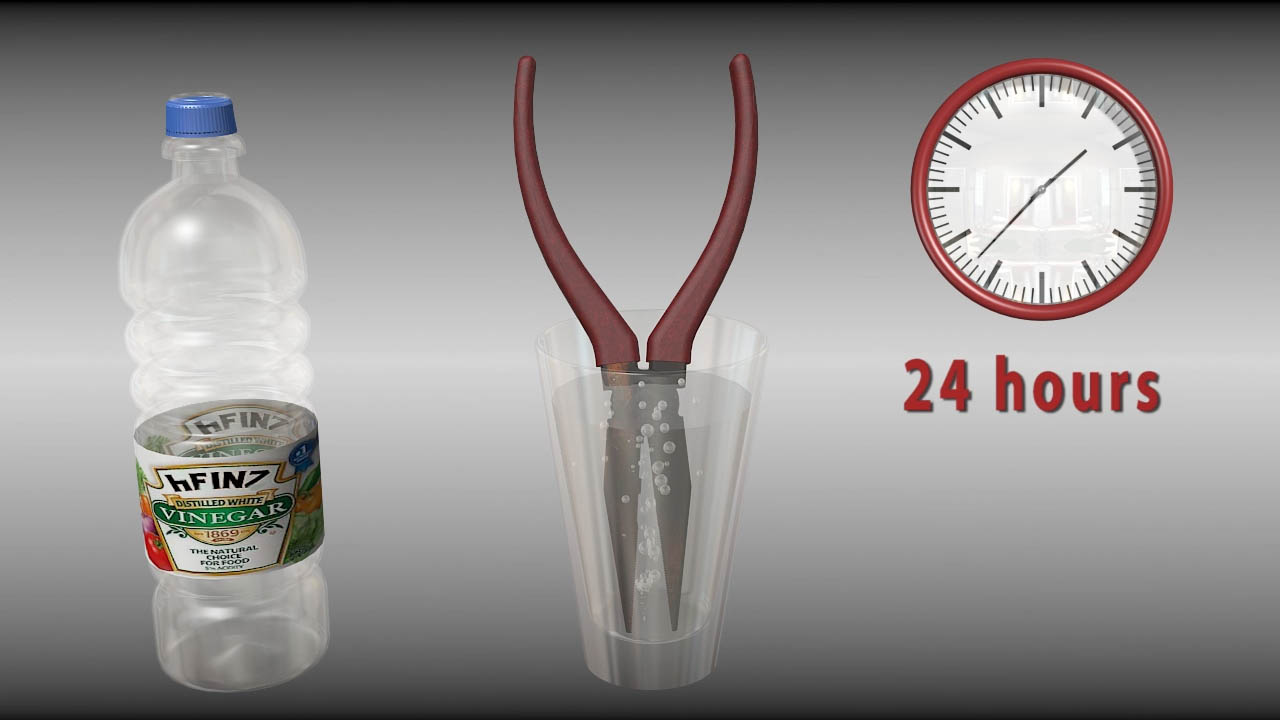How Do You Remove Rust From Painted Metal

The bane of any car enthusiast's existence, rust on painted metal is a persistent challenge, even in our increasingly technologically advanced world. While preventative measures and modern paint technologies offer some protection, the insidious creep of oxidation remains a threat. But fear not, fellow gearheads, because the future of rust removal is looking brighter than ever, fueled by innovation across the automotive landscape.
Traditional Methods: A Lasting Legacy with Evolving Enhancements
Let's acknowledge the stalwarts: sandpaper, wire brushes, chemical rust removers. These methods, while effective in many cases, are often labor-intensive and can potentially damage the surrounding paint if not handled with extreme care. However, even these time-tested techniques are undergoing a digital transformation. Precision abrasive tools coupled with AI-powered paint thickness sensors are emerging, allowing for targeted rust removal without compromising the integrity of the original finish. Imagine a robotic arm, guided by real-time data, meticulously stripping away corrosion, layer by layer. This is not science fiction; it's the direction we're heading.
Laser Ablation: The Cutting Edge of Corrosion Control
Enter laser ablation, a game-changer that utilizes focused laser beams to vaporize rust without harming the underlying metal or paint. This technique, already employed in various industries, is making its way into the automotive sector. Its appeal lies in its non-contact nature, eliminating the risk of mechanical damage. Think of it as a surgical scalpel for rust, precisely targeting the problem area. While currently expensive and requiring specialized equipment, the cost is expected to decrease as the technology matures and becomes more widely adopted, especially in restoration shops specializing in classic electric vehicles.
Electrochemical Techniques: Harnessing the Power of Electrons
Electrochemical rust removal involves using an electrical current to reverse the oxidation process. This can be achieved through various methods, including electrolysis and electroplating. These techniques offer the advantage of removing rust from hard-to-reach areas and are particularly well-suited for restoring vintage vehicles with intricate designs. As battery technology advances in the EV world, we can anticipate more refined and efficient electrochemical rust removal systems to emerge, powered by clean energy sources. Imagine a portable, battery-operated device capable of reversing rust on the go.
The Role of Electric Vehicles and Hybrid Systems
The rise of electric vehicles (EVs) and hybrid systems indirectly contributes to the fight against rust. EVs, with their simpler powertrains and reduced emissions, lessen the environmental impact that can accelerate corrosion. Furthermore, the focus on lightweight materials in EV design, such as aluminum and carbon fiber, provides a natural resistance to rust. While steel components remain in many areas, the overall trend towards corrosion-resistant materials is undeniable. Hybrid systems, with their increased fuel efficiency and reduced reliance on traditional combustion engines, also contribute to a cleaner environment, lessening the severity of rust-inducing factors.
Smart Automotive Solutions: Prevention is Better Than Cure
Perhaps the most promising advancements lie in smart automotive solutions that actively prevent rust formation. Self-healing paints, incorporating microcapsules that release corrosion inhibitors when damaged, are on the horizon. Furthermore, advanced sensor systems can monitor humidity levels and detect early signs of corrosion, alerting the driver and enabling proactive measures. Connected car technology allows vehicles to communicate with each other and share data about road conditions and environmental factors, providing valuable insights for preventative maintenance.
Challenges and Opportunities
While the future of rust removal is bright, challenges remain. The high cost of some advanced technologies, such as laser ablation and self-healing paints, needs to be addressed to make them accessible to a wider audience. The environmental impact of chemical rust removers and the energy consumption of electrochemical processes require careful consideration. Additionally, training and education are essential to ensure that technicians are equipped to handle these new technologies safely and effectively. However, these challenges also present opportunities for innovation and entrepreneurship. The development of affordable and sustainable rust removal solutions will be a key driver of growth in the automotive aftermarket.
A Vision of the Future
Imagine a future where rust is a distant memory. Vehicles are coated with self-healing paints, constantly monitoring their own condition and proactively preventing corrosion. Robotic systems, guided by AI, effortlessly repair any minor damage. Electrochemical rust removal devices, powered by clean energy, are readily available for DIY enthusiasts. The air is cleaner, the environment is healthier, and our cars remain pristine for generations to come. This is not just a dream; it's a vision that is within our reach, fueled by relentless innovation and a passion for preserving the beauty and integrity of our vehicles. The journey towards rust-free mobility is underway, and it promises to be an exciting ride.
